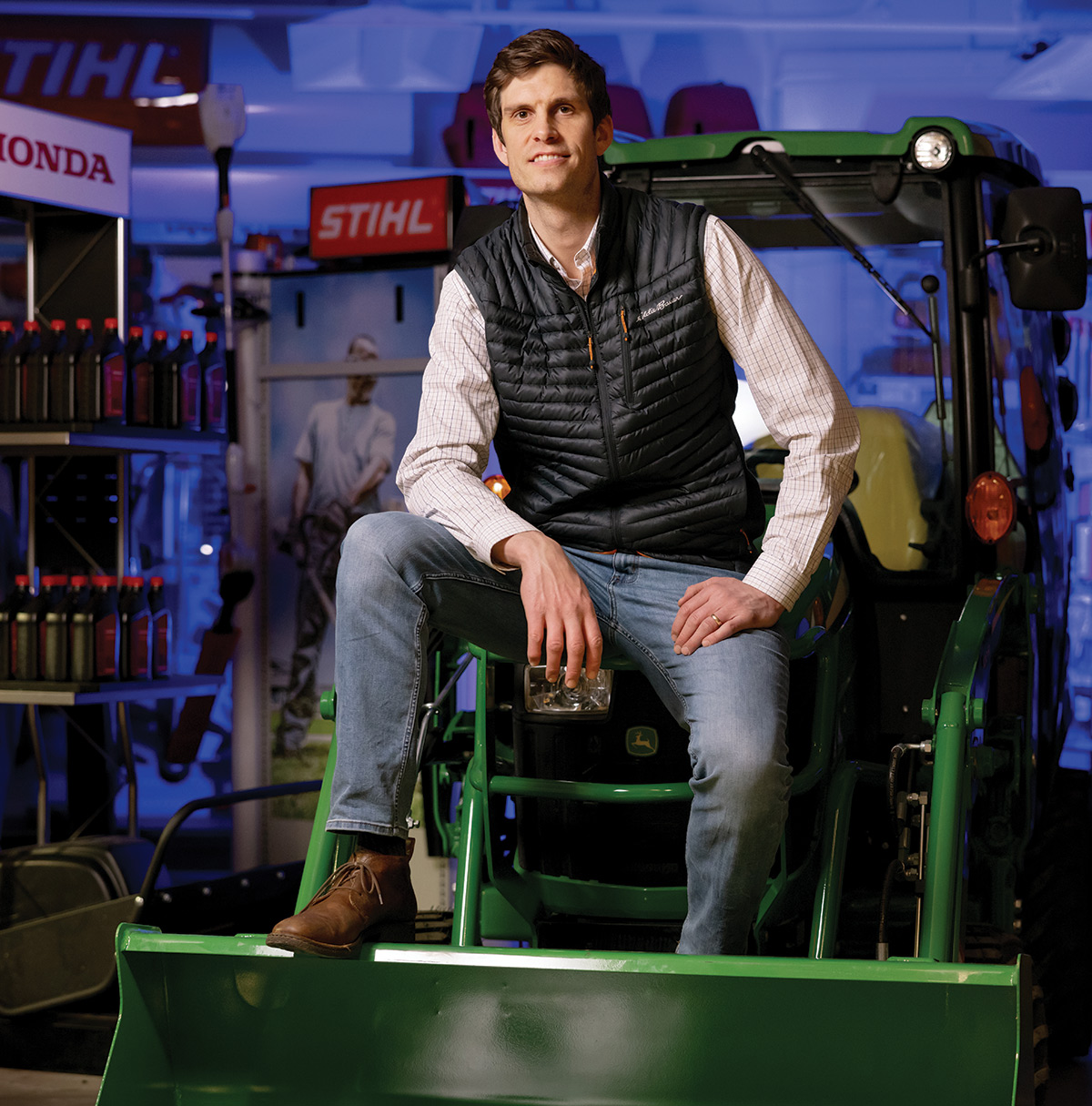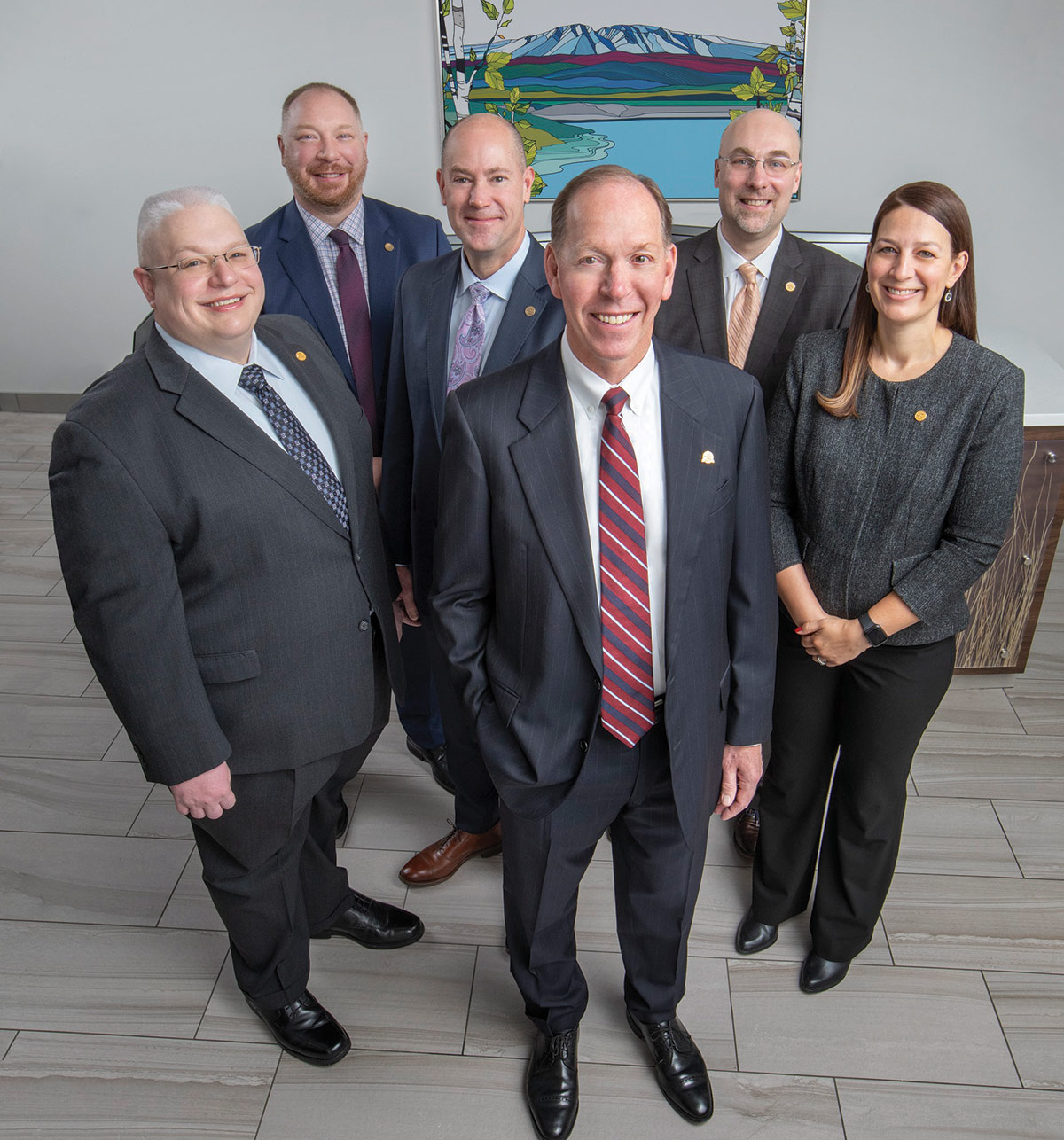he list of the Top 49ers is fairly consistent, though it never repeats itself exactly. Some companies don’t have the revenue year after year to make the list, others may opt to participate one year and not another. Every so often, a new company builds its revenue sufficiently to qualify for the first time, a feat we often recognize in our special section and annual luncheon presentation.
This year is unique as we welcome three “new” Top 49ers to the ranks. Craig Taylor Equipment fits our traditional sense of a new 49er, as 2022 is its first ever appearance on the list.
Alaska USA Federal Credit Union and Northrim Bank are slightly different. These financial institutions are new this year because of the change in our criteria: our past criteria of “Alaskan-owned” disqualified both. Alaska USA is member-owned and, with its continued growth, there was a tipping point where it had more members outside Alaska than within. Northrim is publicly traded and cannot guarantee the residency of its shareholders. That said, both were founded in Alaska and remain headquartered here, and under our new criteria we are thrilled to welcome them back to the Top 49ers ranks, recognizing their ongoing commitment to financing Alaska.

Craig Taylor Equipment provides parts, services, sales and rentals for John Deere, Bobcat, Doosan, Stihl, Honda, DR Power, and other brands. Even with that lineup, “We felt like there was only so much growth in market share we could get within the current business,” Devine says, “so we’ve always been looking for M&A opportunities along the way.”
The company found one in January 2021: Dobbs Peterbilt of Alaska’s assets. “When this [opportunity] came along, it felt like it checked all the boxes for us,” Devine says. “It expands our offering, obviously, from John Deere and Bobcat on the construction equipment side into a new vertical, which is transportation and trucking… We felt like we could leverage that because there’s the crossover with customer base… Everybody who has a truck could use a Bobcat, and everybody who has a Bobcat could use a truck. It’s sort of an obvious marriage.”
Kerry Tasker | Alaska Business

Kerry Tasker | Alaska Business
The Peterbilt acquisition also improves the company’s brand diversity, which Devine says is one of the company’s strengths. “If all our eggs were in one basket, and that manufacturer started to struggle, we would really feel the pain,” he says. Plus, with recent pandemic-related logistics challenges, dealing several high-quality brands has allowed Craig Taylor Equipment to work with its customers to find solutions to suit their needs. “We know [supply chain issues are] hard, but we’re not going to stop with, ‘No, that’s not available. Sorry.’ If somebody calls and they need a part and it’s not available, we’re going to say, ‘I might be able to find one at another dealership.’”
It’s part of the company’s overall goals. “Our mission is to be the most trusted and reliable source for anyone who’s building Alaska’s future,” says Devine. “Everything from agriculture to resource development to road construction to bridge building to transportation—all these industries that are building Alaska, they need the equipment that we have.”
Some banks dropped off when they lost their Alaska ownership, as when National Bank of Alaska was absorbed by Wells Fargo in 2000. Others were gone by 1987, wiped out by the mid-‘80s economic recession after oil prices crashed to $10 per barrel.
A staggering thirteen Alaska banks failed during that devastating time. In the aftermath, Alaskans were weary, wary, and worried: the banks’ failures left customers insecure and uncertain when, how, or where to further invest funds and conduct financial business.
Chris Arend | Northrim Bank

Chris Arend | Northrim Bank
Individual Alaskans purchased interests in the company that raised the $8 million of capital to open the bank for business on December 4, 1990. Of the original twenty-one employees, Schierhorn is one of only two who have remained with the company every step of the way.
“During our first four months, we operated out of two actual construction trailers located in our parking lot,” Schierhorn says. “It was a really exciting time to be at the bank.”
In its first year, Northrim Bank bloomed from $8 million to $50 million in assets.
“Each customer was a new victory,” Schierhorn says. “Here we were operating out of a trailer. How were we going to expect customers to do business with us? We were going to work our tails off to provide them with the best customer service possible. And we did that time and again.”
One early promotional campaign promised that customers who opened an account would get their name on a brick on the bank’s new floor.
“I recall, from my very, very small office in the bank trailer, watching customers literally streaming out of the branch trailer, wanting to be part of the bank, having their names inscribed on the bank,” Schierhorn says. “It was really important for people to be part of the bank at that time.”
Instilling that sense of ownership was part of building public trust in Northrim, and in the wake of the financial fall-out of the 1980s recession, that trust was everything, Schierhorn says. The bank’s mission is to be Alaska’s most trusted institution, while its mission is to be a premier bank and employer of choice, and constantly its core values are proud to be Alaskan, superior customer first service, growth, and integrity.
“From very early on, with that customer first focus, we were also interested in providing a variety of products we saw a need for,” Schierhorn says. “One was residential construction loans. There weren’t many institutions left providing residential construction loans. Property value had dropped significantly in the latter part of the ‘80s. And so there was a reluctance to provide financing for home construction at that time.”
Northrim branches and offices opened in South Anchorage and in Fairbanks, Schierhorn’s hometown. When Bank of America exited Alaska and sold its branches, Northrim purchased eight of them, expanding from three to eleven branches, tripling its customer base and adding key employees, many of whom remain today.
Alaska USA
This year, as Northrim returns to the Top 49ers ranks, it lands at number 28, reporting revenue of $136.9 million.
Northrim has matured to an active, engaged community leader with more than 400 employees, seventeen branches, and two loan production offices stretching from Fairbanks to Southeast Alaska, and residential mortgage origination offices across the state, serving an estimated 90 percent of Alaska’s population. In recent years, Northrim has expanded into East Anchorage, the Kenai Peninsula, Kodiak, and Nome.
“We had to overcome a lot of challenges,” Schierhorn says. “It’s not easy to start a business, period, nor to start a business when we did in 1990 when all those banks had failed. We were invested in our customers and in our relationships with them right from the beginning and worked to provide them with a sense of trust in us.”
“Our mission is to enrich lives through world-class financial services,” says President and CEO Geoff Lundfelt. “Our team strives every day to provide competitive, high-value products and services to assist our members as they move forward on their financial journey.”
Alaska USA predates statehood, chartered in 1948 as Alaskan Air Depot Federal Credit Union for military personnel and federal employees in Anchorage. Fifteen founding members felt that local financial institutions were not adequately meeting the credit needs of the federal workers recently transferred to Alaska, so they pooled savings and extended credit to one another. At first, members volunteered to operate the credit union. The first employee was hired in 1959.
Membership expanded beyond its military roots in 1974 with authorization to serve workers building the Trans Alaska Pipeline System. Alaska USA opened 20,000 member accounts during the four years of pipeline construction and startup. During that same period, the credit union broadened its membership to include shareholders of Alaska Native regional corporations. The authority was extended on an interim basis several times before Congress in 1981 permanently allowed the credit union to serve Alaska Natives. It was the only federal legislation in history to authorize a credit union to serve a specific group of individuals.
Today, Alaska USA employs nearly 1,200 Alaska-based employees and has more than 750,000 members in all fifty states and around the world, with branches in Alaska, Arizona, California, and Washington, and more than $12 billion in assets. The credit union offers consumer and commercial deposit and loan services, as well as mortgage and real estate loans, insurance, and investment management.
This convenient colocation of financial services complements the accessibility that is part of Alaska USA’s identity. Members can access any of the credit union’s seventy-nine branches, with twenty-seven located in fourteen Alaska communities.
Lundfelt believes accessibility became especially important during the COVID-19 pandemic.
“During these past couple of years, when many companies shifted away from live, human customer service toward more and more automation or shifted their operations to overseas contact centers, Alaska USA doubled down on our commitment to 24/7 member service,” Lundfelt says.
Alaska USA’s legacy is also one of continuously leveraging technology. In 1973 it was the first Alaska financial institution to launch a call center. It was also the first financial institution to offer account access via personal computer. Later it added a mobile platform and, in 2011, an app.
Lundfelt says, “We continue to make significant investments in technology to make it even easier for members to transact and/or resolve issues in an easy-to-use, self-driven automated solution.” ![]()
For more about Northrim’s commitment to superior customer experience, choose this article.